| Let us start with
UHF television antennas, as these are usually the easiest to spot.
The big main stations such as Crystal Palace and Sutton Coldfield have the
UHF aerials installed at the very top of the structure.
Not that you can see the aerials themselves as they are hidden behind a protective
GRP ( Glass Reinforced Plastic) shroud, which is usually white,
but some become discoloured due to weathering.
Figures 2, 3 and 4 provide examples of these impressive
structures. |
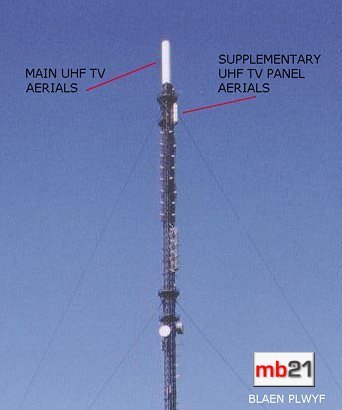
Figure 2 |

Figure 3 |
|
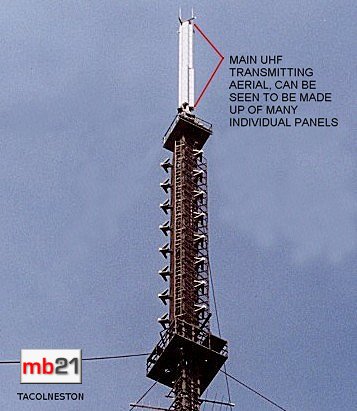
Figure 4
|
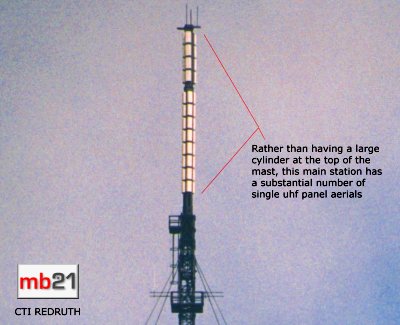
Figure 5 |
Other main stations, such as
Rosemarkie and Redruth, can have a significant number of discrete UHF panel
antennas mounted at the top of the mast as figure 5
shows. |
| Medium power relays too, will often utilize a white cylinder aerial similar to
those used by the main stations. These are often smaller and of varying
dimensions, some short and squat, others tall and thin.
Figure 6 gives an example. |

Figure 6 |
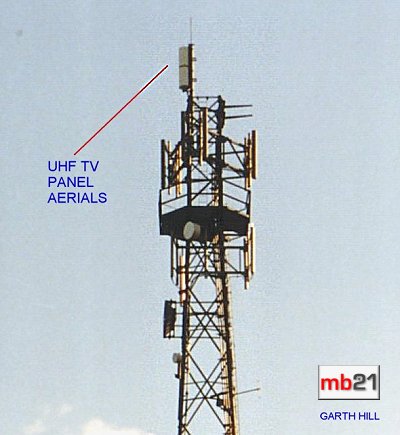
Figure 7 |
Low power relays use a variety of aerial types. Some use several panel
aerials, often two or four.
This type can be seen in figure 7. |
| These UHF panel aerials are also frequently used for DTT (Digital Terrestrial
Television), both at main stations and at relay stations, since DTT is
transmitted at relatively lower powers. The Channel Five signal from main
and relay stations is also sometimes broadcast via this type of panel aerial. |

Figure 7a |
Some very low power relay stations use
simple, and exposed, dipole and log-periodic antennas. The nature of these
is easier to examine since the radiating elements are not encased in a GRP
shroud. Figure 8 shows four simple aerials for television broadcasting
mounted at the top of the mast. Figures 9 & 10 show two low power
relays that use the more directional and higher gain log-periodic aerials.
Somestimes a station may have one set of aerials facing in a particular
direction as in figure 9, whereas other relays can have two sets of
aerials facing in different directions, as in figure 10, perhaps to
broaden the beam of the signal or maybe to cover two distinct areas.
Although the vast majority of relay transmitters are vertically polarized,
some relays can have both vertical and horizontal aerials operating on the
same channels but with different ERPs, something to look out for!
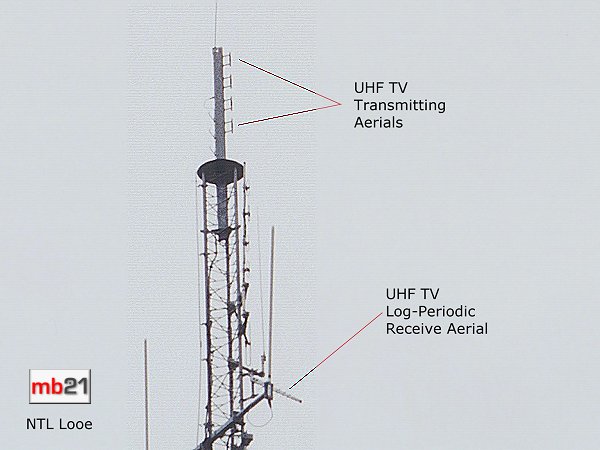
Figure 8
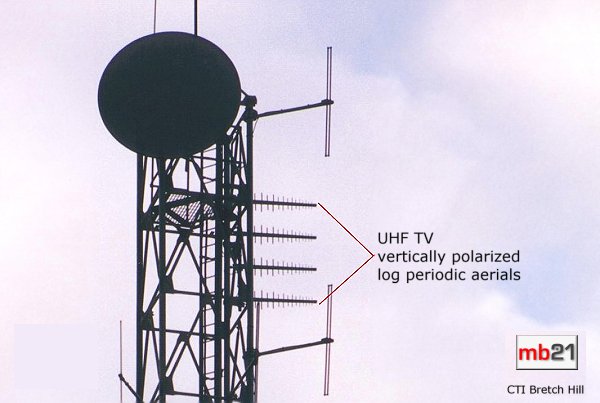
Figure 9

Figure 10
|


















